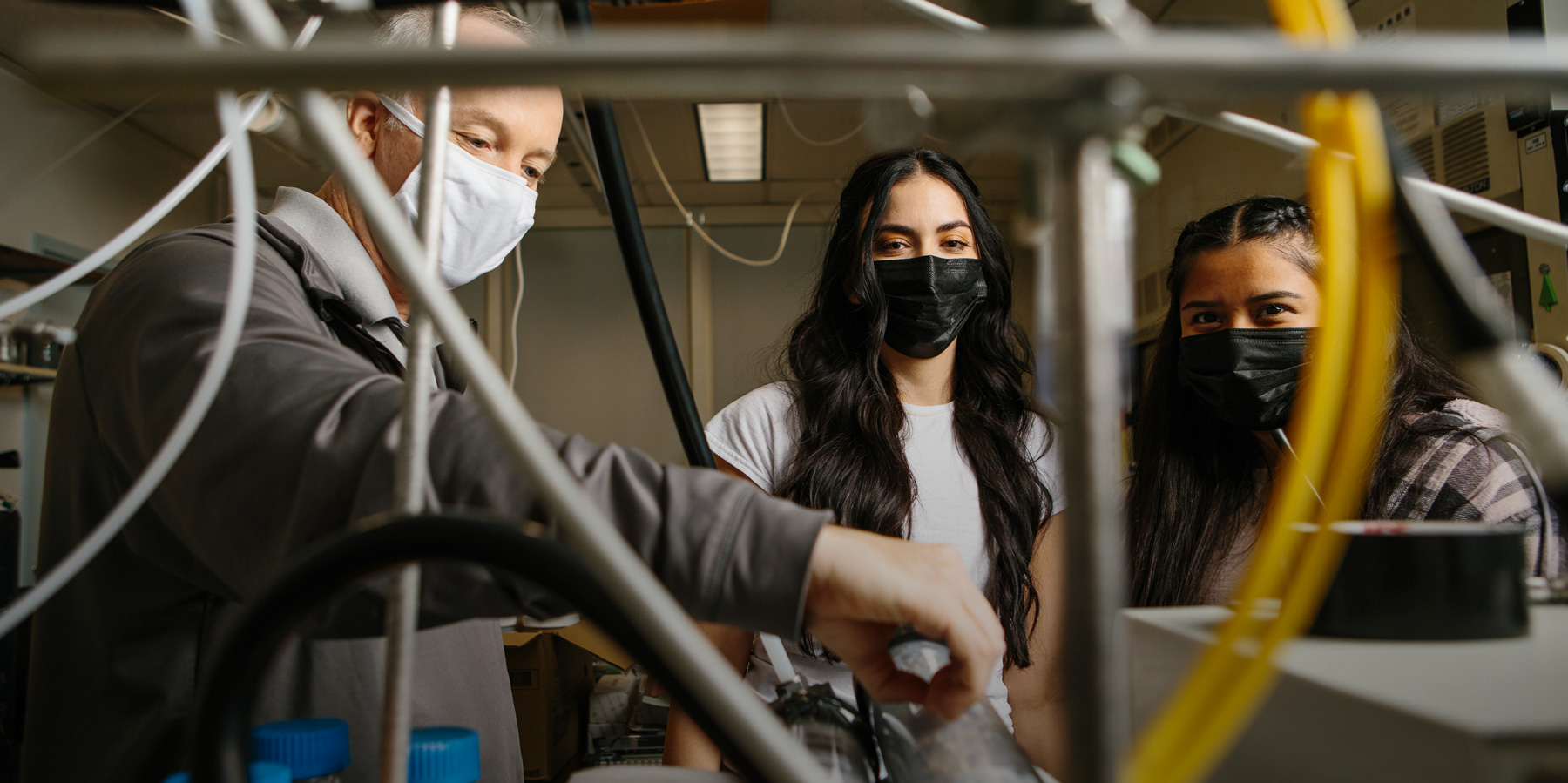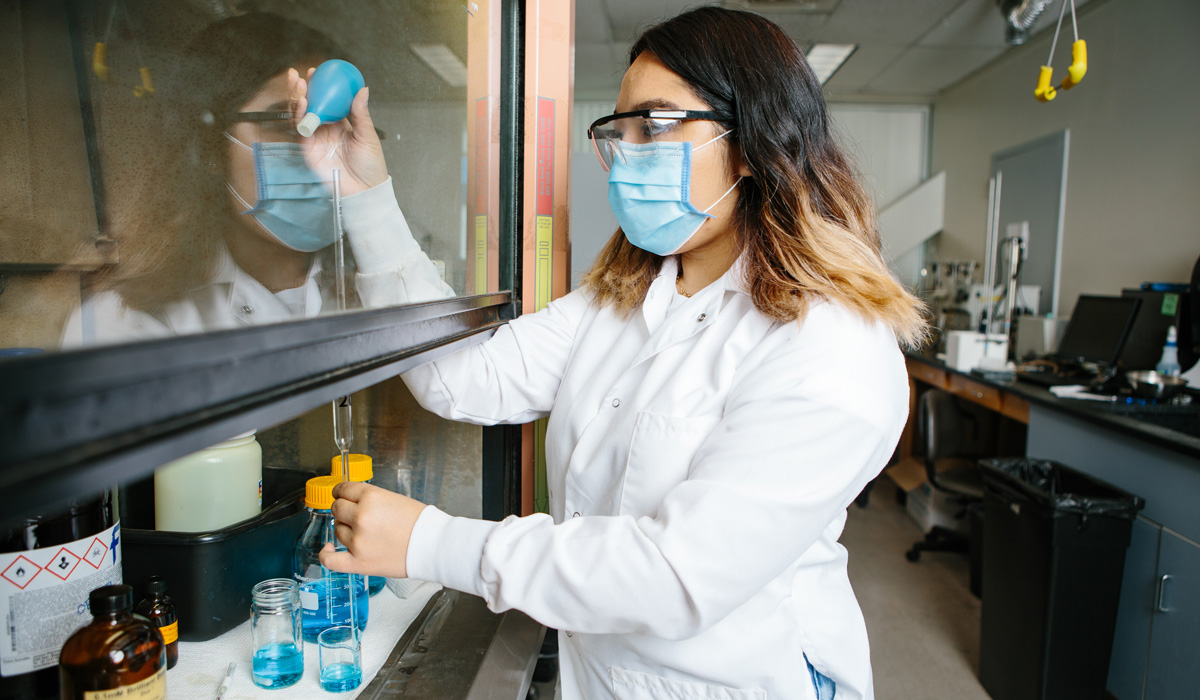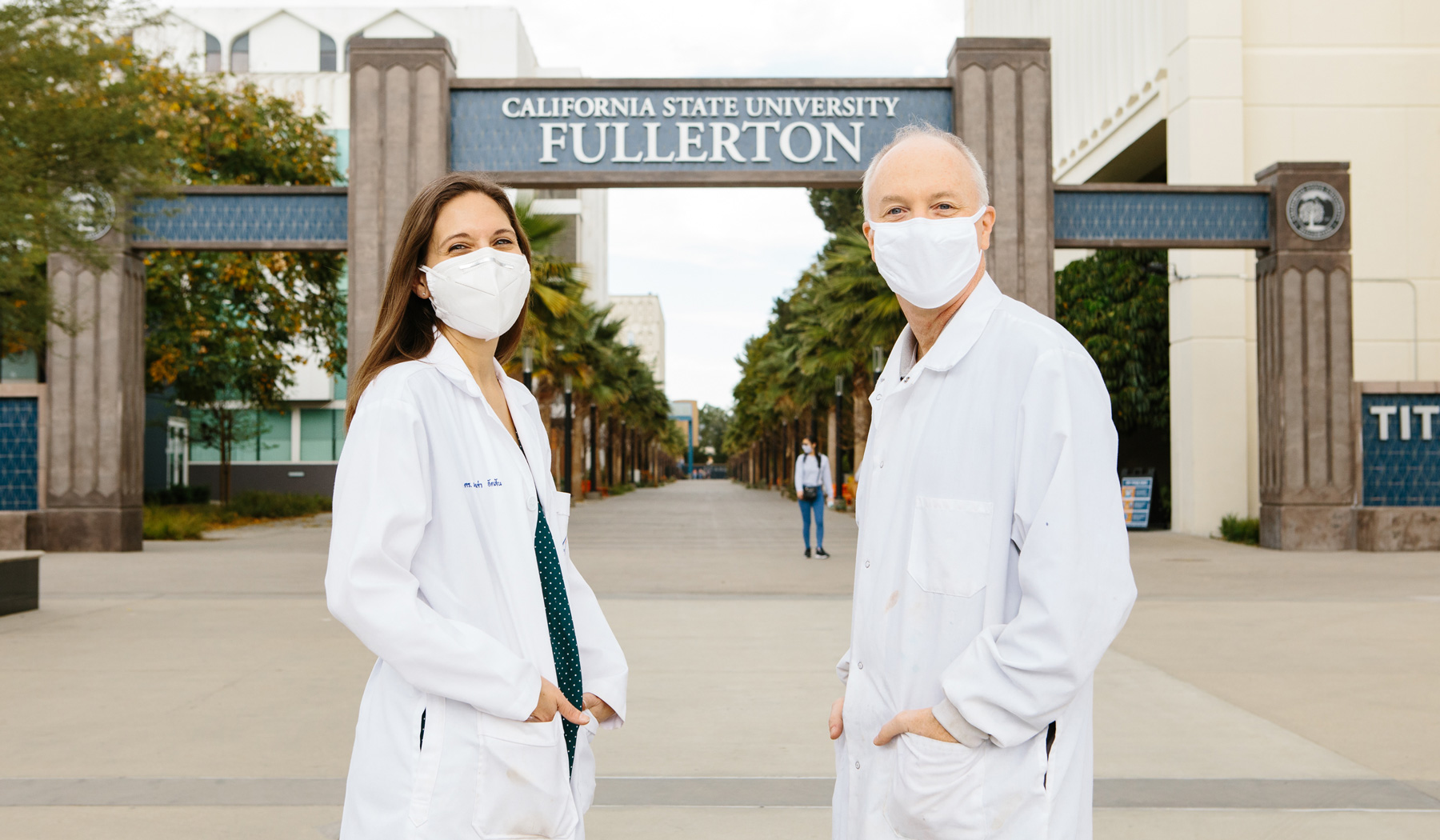
Floating In The Air
CAL STATE FULLERTON
One cause of global warming arises from dark carbon particles in the air absorbing the sunlight entering the atmosphere rather than reflecting it back into space. As the particles accumulate, they absorb more light and heat, warming the earth further. While there has been a good amount of research on how black carbon, like soot particles emitted by semitrucks, intensifies the warming effect, not as much has been done on brown carbon, like smog or smoke.
“People have been studying climate change for decades, but this is a solvable problem," says Daniel Curtis, Ph.D., associate professor of analytical chemistry at
California State University, Fullerton. “It's going to take a lot of effort, and it's going to be a global effort for us to figure this out. We have all these examples of where mitigation has worked in the past, and so we would like to apply that mitigation to this problem."
Dr. Curtis's
research on brown carbon focuses on how these aerosol particles directly interact with sunlight. In the lab, he and his students have developed instrumentation that will allow him to create brown carbon aerosols, shine light on them and measure whether they absorb or scatter the light.

Student Linda Nguyen prepares samples to measure the known reaction of bleach and blue dye, in advance of future study on the rate of formation of brown carbon aerosol.
“The first step is always understanding," he says. “We want to know what these particles do when they're in the atmosphere. Once we learn that, we can start to figure out if there are different ways of dealing with climate change."
Paula Hudson, Ph.D., associate professor of analytical chemistry, builds on Curtis's research by studying how these particles absorb water and form clouds that then interact with light. She brings together the brown carbon aerosols with water vapor in her lab instruments and measures how much water the particles have absorbed using a microbalance. This information tells her and her students whether the aerosols will form clouds that reflect light, which cool the earth.
During the past year, she and her students conducted the experiment and found that over time, the particles become darker while maintaining the same level of water uptake. This means the particles will increasingly absorb more light without forming clouds that will increasingly reflect more light, resulting in a net warming effect. The next step will be testing the aerosols after introducing other substances from the atmosphere into the lab setting.

Professors Paula Hudson and Daniel Curtis at Cal State Fullerton, March 2021.
“If we know this type of aerosol has this type of effect, then you go back to policymakers and say, for example, 'We need to install scrubbers on our smokestacks' or 'We need to reduce the total net particle output from diesel vehicles,'" Dr. Hudson says.
But the solution to reducing brown carbon may be more difficult to come by, she explains. “Now that we're looking at these particles that are generated from natural processes like forest fires, then it becomes a huge cyclical problem—because everything is warming, we're having more forest fires and we're creating more particles, which are creating more warming. Then they are also forming clouds that, although highly reflective, don't produce rain and cause a lot of local drought situations as well, which is then self-perpetuating. … We want to understand the effect these particles have because if it really comes down to needing to reduce the number of forest fires, then let's address that question just like we address reducing output from diesel vehicles or smokestacks."
Story: Michelle McCarthy
photoGRAPHY: PATRICK RECORD
Share this story